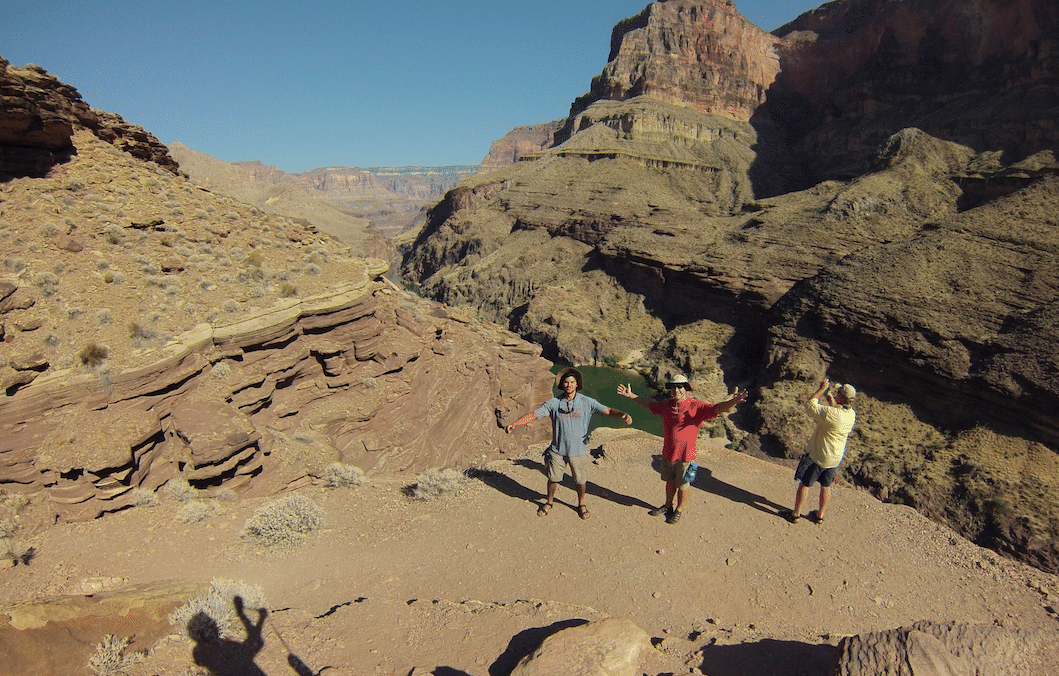
5 Things Shooting the Grand Canyon Rapids Can Teach Us About Financial Planning
We took the trip of a lifetime this summer, but it was a long time coming.
Little did we know when we started talks in 2013 with a close group of friends about rafting in the Grand Canyon that it would take over a year to schedule, plan and execute our trip. As LPL financial planners at Financial Strategies Group, we are proactive and thorough about everything we do. That being said, we were amazed at the amount of coordination required. The checklists were truly daunting! It made us appreciate our clients, who I know often feel overwhelmed at the amount of information we request when beginning a comprehensive financial planning relationship. Without methodical, time-consuming effort, our trip would not have happened.
Here are 5 things shooting the rapids at the Grand Canyon can teach us about financial planning:
1. You need a Big Picture Plan.
You don’t just show up on the dock with an oar and hop in the raft when you’re shooting rapids at the Grand Canyon. Guided trips take over a year to plan, with long lists of provisions required. With financial planning, it’s important to map out your goals, vision and dreams so that you can effectively create a strategy that strives to get you from where you are to where you want to be. Of course, referencing your financial plan along the way helps keep you on track.
2. Your plan needs to accommodate for contingencies.
Nobody likes to think about bad things happening, but risk is certain in life. Having a backup plan means you’re prepared in case things change unexpectedly. Early on during our trip, one of the guides was seriously injured when she was thrown from the raft. We were carrying a satellite phone, but since the risk wasn’t life-threatening, no emergency medical assistance was available. Between our medical kit and our doctor friend, permanent damage was avoided and the guide was able to continue. So what happens when your financial plan is derailed by health issues or job loss? Do you have provisions in place in case of a catastrophic life event? Talking through and planning for a potential worst-case scenario is a smart part of any comprehensive financial plan.
3. Using an experienced guide is a must.
This was by no means a solo trip. Our guides have been whitewater rafting in the Grand Canyon for over 35 years. We did not stumble on their expertise by accident; we were very intentional about seeking someone to lead us who we knew we could trust. When beginning a relationship with a financial planner, look for someone with solid experience. After all, this is the person who will collaborate and navigate on your route towards financial success. Wouldn’t you rather have someone who’s ‘been there, done that’ through many challenging market periods?
4. Always be proactive about your situation.
One of the most important things you learn while rafting is that you should always be looking ahead. Shooting rapids requires a constant awareness of your surroundings from all angles, especially ahead of you. You need to be able to anticipate drops, rocks, and powerful eddies and respond accordingly. Of course, with financial planning, no one can predict the future. But you can plan for it. Smart advisors don’t wait until problems happen; they are constantly looking forward to anticipate things like market risk, estate, and tax planning or long term care needs. Their informed choices can help clients so that plans stay on track and risk is managed.
5. Getting off the grid is invaluable.
Today’s world is always on. We have to process information constantly, responding to calls, texts, emails and other data. However, when you’re in the Grand Canyon, technology is not an option. For ten glorious days we existed without a signal, save for the reassuring presence of our emergency satellite phone. We were able to disconnect from the world and reconnect with ourselves. We had the freedom to evaluate things, talk through things, or simply dream about things. There was a tangible benefit to stepping away from our daily routines and doing some deep thinking. What does this have to do with financial planning? Everything. Don’t let the day-to-day volatility of your life run your financial plan, and resist the urge to make knee-jerk changes according to the latest financial commentary. Unplug from the media hype and trust your financial planner’s long-term guidance. A well-constructed strategy doesn’t need to be over-managed; it needs to be actively monitored with periodic reviews.
We often discuss the fact that most people think only of investments with respect to financial planning. Pick a couple of stocks, contribute to a 401k, and you’re good to go. But after our Grand Canyon trip, we realized we were guilty of this type of narrow thinking ourselves. We thought we could pick up the phone, book a trip, pack our bags, and head out. We quickly discovered we had oversimplified the process.
We needed time to think ahead and plan accordingly. And we needed the help of our expert guides to make our trip safe and complete.
We challenge you to think of financial planning in a similar way.
At Financial Strategies Group, we dedicate our time and expertise to handling your unique financial needs. If you’re not already familiar with our financial planning team, let’s talk.
Call and schedule an appointment with Hank or Kim today at 954-888-4680.
#1-291028



